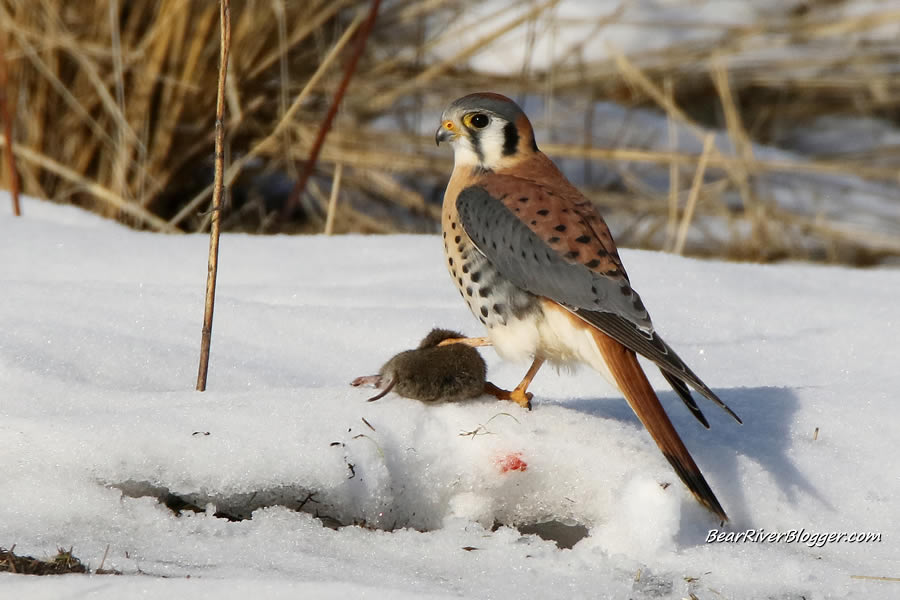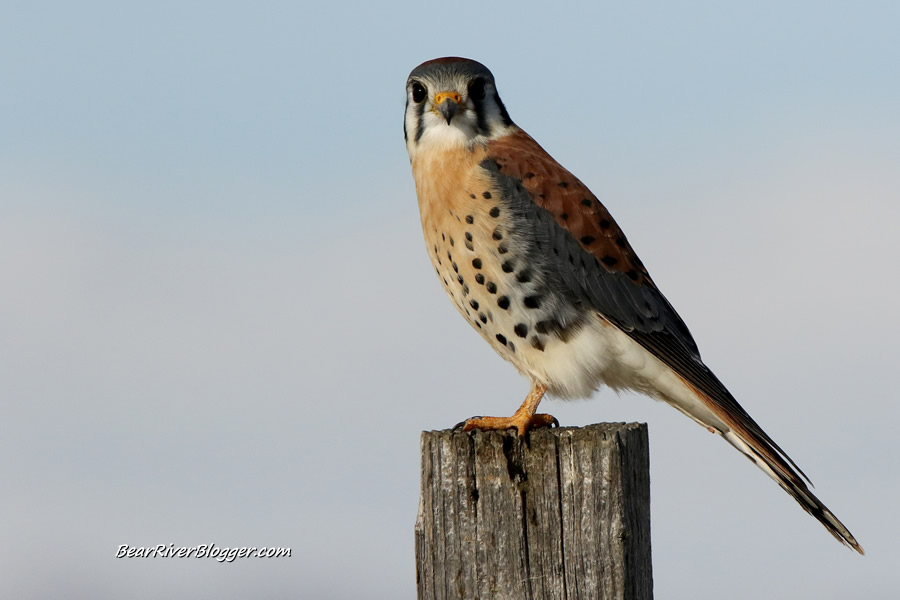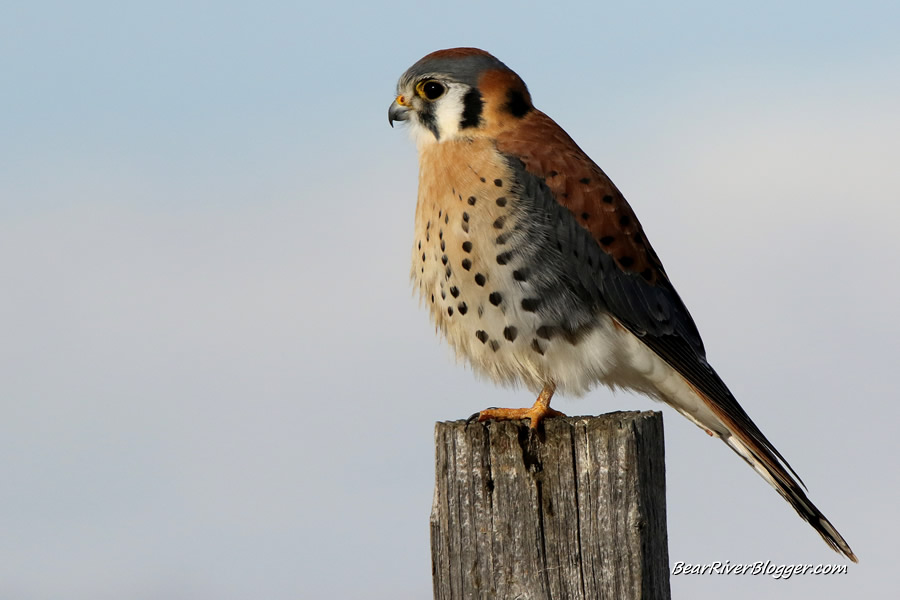Each day as I drive the 12-mile stretch of road between the Bear River Migratory bird Refuge visitors center and the auto tour route, I am greeted by North America’s smallest falcon, the American kestrel, casually perched on one of the fence posts or small trees along the roadway searching for its next meal.

Kestrels are regularly found on Forest street during wintertime hunting the large grasslands and sparsely covered roadsides. But what do these small but fierce falcons eat during the winter when their summer food sources are gone for the season?
Since the kestrel doesn’t migrate to a warmer climate, at least ours here in Utah don’t, that is, they have to adapt from their wide-ranging summer diet to a more focused one keyed on the few remaining food sources available.
Small birds and rodents, mainly mice and voles, feed the kestrel during the long, cold winter months when other food sources are gone for the season.
The American kestrel primarily feeds on rodents during the winter. Small birds are also taken at times when they are available, but much of the typical summer population of birds migrate for the winter, leaving a lot fewer birds to hunt this time of year.
Rodents, on the other hand, have spent the entire summer breeding and building up their population, which typically peaks during fall and winter and helps get the kestrel through this lean time of year.
Spend any amount of time watching a kestrel during winter around the refuge, and you will see what I mean
. It is extremely common to see one perched on a fence post or power pole after a successful hunt eating a mouse.
Last week, on my way down to the auto tour route, I was privileged to witness and photograph a successful kestrel hunt.
I watched as the colorful male raptor scanned the nearby grasses, biding its time to strike when the opportunity presents itself. And it did.

The male kestrel aggressively launched from its perch and dove into a small bank of snow, pulling out a vole for a morning meal.
It is exciting to watch nature play out like this in real-time. I actually don’t root for the bird or the rodent in cases like this but rather enjoy the grand spectacle of nature as a whole.
Each participant, predator, and prey, plays an important role in the society of the natural world, and each is dependant upon the other for long-term survival as a species.
The American kestrel couldn’t make it through our long, cold winters without rodents, and the rodent population, unchecked without kestrels and other raptors, would skyrocket and eventually crash from possible disease and starvation due to overpopulation.
What does an american kestrel eat?
Kestrels have a wide variety in their diet, and it changes depending on the time of year and the available food sources.
The American kestrel eats large insects, small mammals, birds, and even some reptiles.
Grasshoppers are a favorite food during the summer for kestrels, but they also will eat beetles, moths, dragonflies, and caterpillars.
Mice and voles are also consumed by American kestrels, and some have been known to take frogs, lizards, and even earthworms at times.

As noted before, much of the kestrel’s diet depends upon the time of year and the corresponding available food sources.
For example, most online sources and books I have read commonly mention grasshoppers are a popular summer staple for kestrels but insects, as you can understand, are non-existent during wintertime in these frigid colder climates, leaving the kestrel having to change its diet for a season.
How much does an american kestrel eat?
This was a hard question to answer. The only info I found was from a falconer who said American kestrels eat between 15-25 grams a day, depending on the size of the bird, the temperature, and how much activity the bird does each day.
Roughly, according to the falconer, that comes to about 1-2 mice per day or about 1-2 sparrows per day.
How do american kestrels hunt?
If you watch kestrels for any amount of time you, will notice they have 2 very distinct hunting tactics.
Very commonly, these small falcons can be seen perched high above the earth in a tree or even a power pole, scanning the ground for prey.

Once they spot something they can eat, the small kestrel swoops down and pounces on the unsuspecting critter.
The falcon then oftentimes takes its meal back up to a nearby perch to consume it.
I believe this is their preferred hunting method as it takes much less energy for these extremely small raptors.
Another way American kestrels can hunt and take prey is by hovering above the ground.
This is easiest done when there is a soft breeze, but it can also be done for short periods of time with no available wind.
The kestrel basically flies in one place, rapidly pumping its wings to hover over a field so it can scan the ground for food.
They do this more commonly in areas with no available perches to hunt from.
If you watch when you are out in kestrel territory, you can oftentimes find one hovering in place for a moment or two before it breaks and flies to another location to hunt.

Learn more about nature on the Bear River Migratory Bird Refuge
As you can probably tell from my website, I am a huge fan of the Bear River Bird Refuge. I love nature, and I love photographing it so others can enjoy it as much as I do.
There is an incredible natural world out there, both on and off of the Bear River Migratory Bird Refuge, and I hope to photograph and blog about as much of it as I can so others can see how uniquely wonderful the natural world really is.
For information about visiting the Bear River Refuge, visit their website for additional information and to contact the refuge directly.

Subscribe to our blog
We appreciate your readership and suggest if you like this blog to head over to our subscription page and sign up for email notifications for future blog posts.






